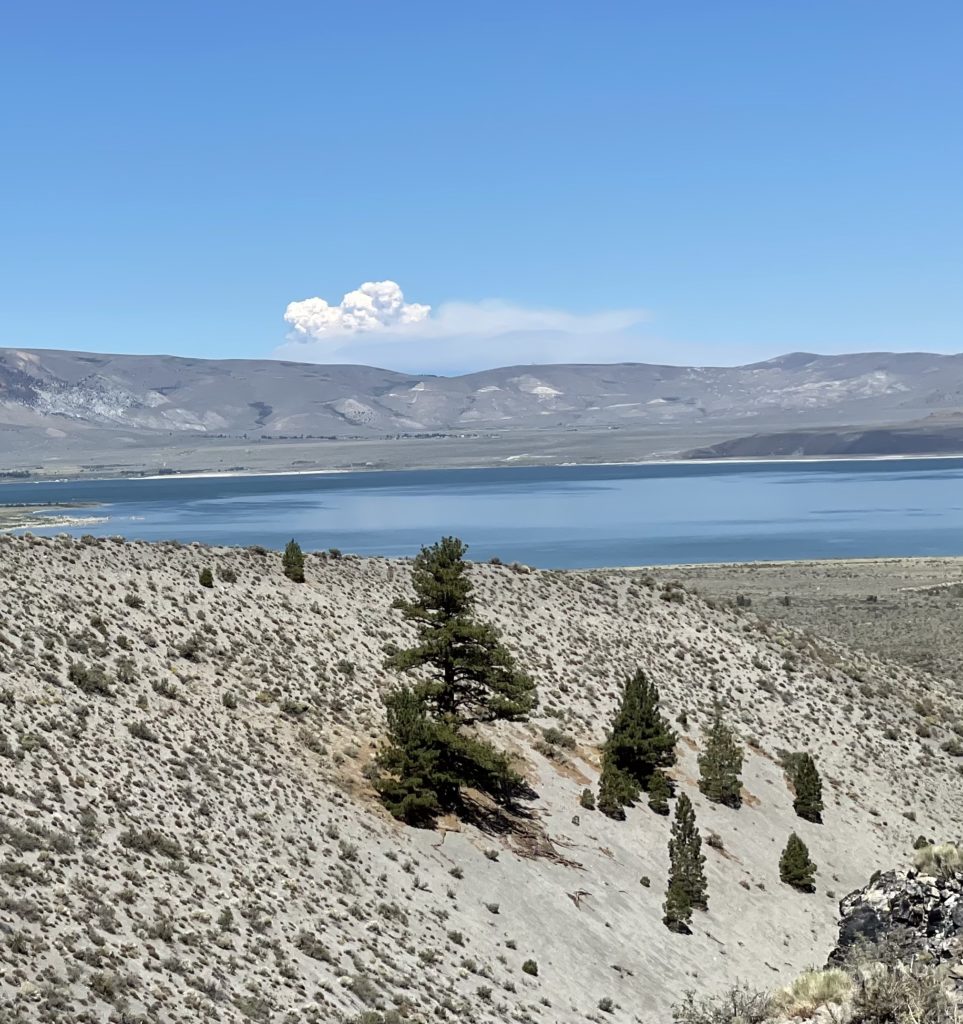
Day One of an n-day trip to Salt Lake City and destinations still undetermined. I’m in Lee Vining now after driving from sea-leval Berkeley out of the Bay Area, across the Valley, through the foothills and Yosemite and up the Tioga Road to Tioga Pass, elevation 9,945 feet. It was dark when I got to the top. I stopped for a few minutes to take in the stars and planets — Jupiter scraping the top of Mount Dana as it rose — and spotted the International Space Station making a pass almost directly overhead. Then it was back in the car for the plunge down through canyon to Lee Vining, where I’m staying tonight. I walked up the road to the region’s most famous Mobil gas station to have dinner (well, the gas station is part of a roadside stop with a store and a better-than-you-could-possibly-have-expected-in-these-parts restaurant. Tonight they had carnitas tacos. Really good).
It does occur to me that sometime maybe I’d like to take a whole trip in daylight. My brother John was just telling me tonight from Montana that he just went over a stretch of road the two of us drove after dark last year and he was staggered at how beautiful it was. All I can tell you about that piece of highway is that it had all the standard lines and markings.
Today, driving after dark was pretty much inevitable because I didn’t leave home until a bit after 2 p.m. I think sunset was about 6:30. Why start after 2? See the headline above. It’s all the stuff the got compressed into a few hours before departure. One would think I’d learn at some point. But not yet.


